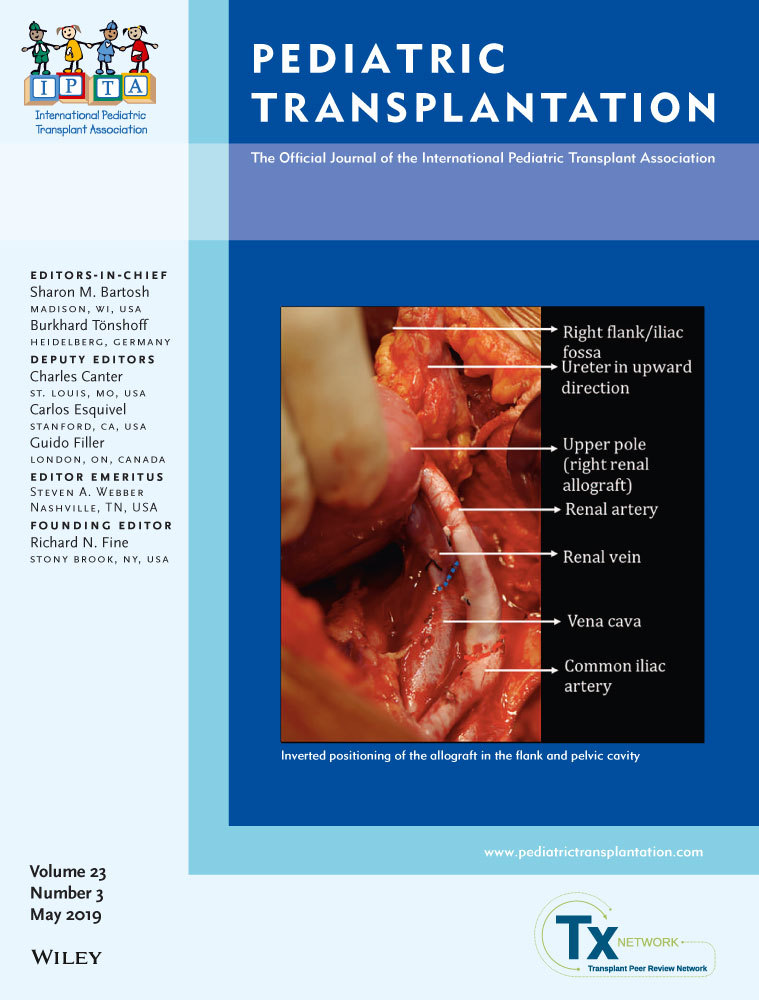Pediatric post-transplant hepatic kaposi sarcoma due to donor-derived human herpesvirus 8
Abstract
In areas of the world where human herpesvirus 8 (HHV-8) is endemic, Kaposi sarcoma (KS) is a common SOT-associated cancer. In the United States, where the virus is not prevalent, PTKS is rare, and there is little literature on pediatric PTKS. We present a North American female who underwent deceased donor, left lateral segment liver transplant for biliary atresia at age 11 months. The donor was a male with no known history of KS, originally from an HHV-8-endemic country. Three months after transplantation, the patient developed liver nodules and portal vein thrombosis. Analysis of needle biopsy established the diagnosis of KS and confirmed that the transformed cells were donor-derived. HHV-8 viremia was detected, and ganciclovir dosing (which had been started prophylactically) was increased. Immunosuppression was changed from tacrolimus to sirolimus. After further disease progression, 8 cycles of paclitaxel were administered. Under this treatment, her nodules regressed, HHV-8 viremia resolved, and she had marked clinic improvement. Notably, the adult recipient of the right liver lobe from the same donor also developed PTKS. This is one of few pediatric PTKS cases described in the literature. It contributes to the mechanistic understanding of PTKS development, illustrating the risk posed by donors from HHV-8-endemic countries, as well as the potential for strong PTKS correlation between multiple recipients of organs from a single shared donor.




